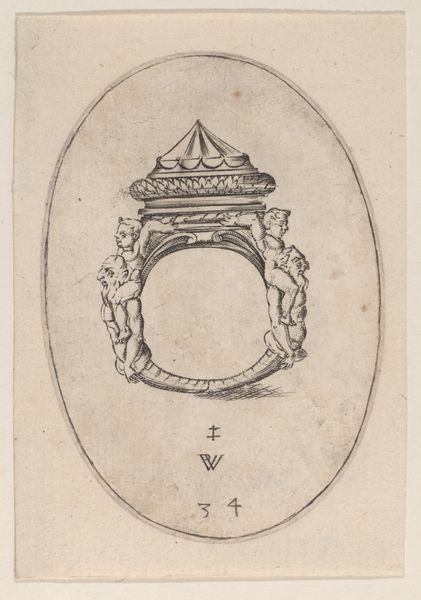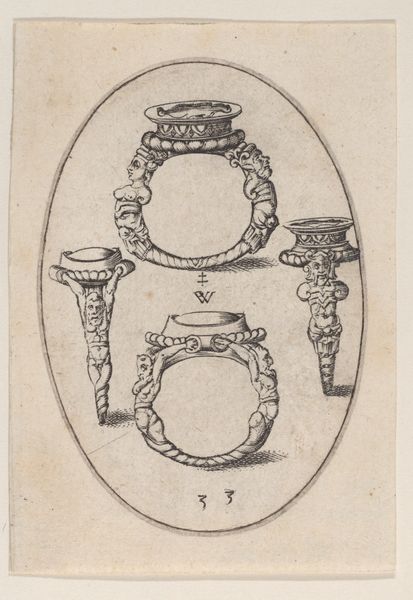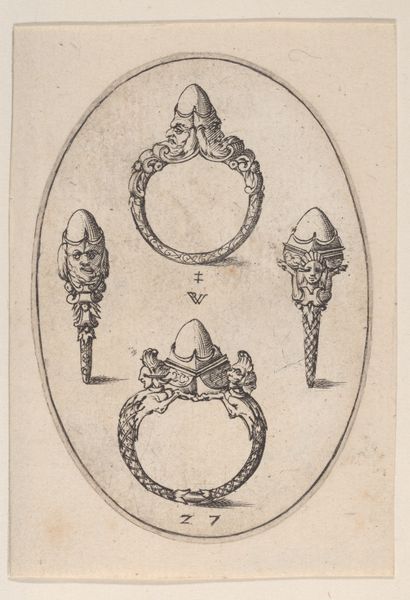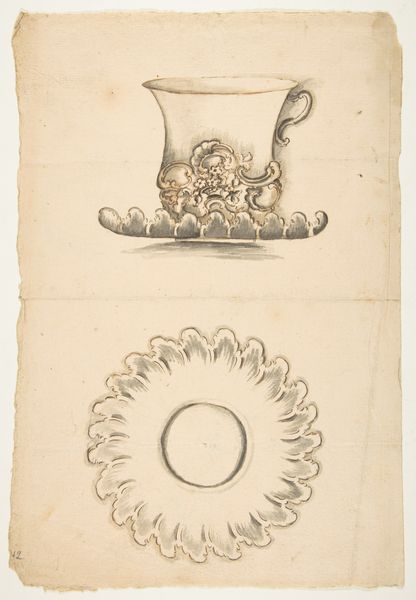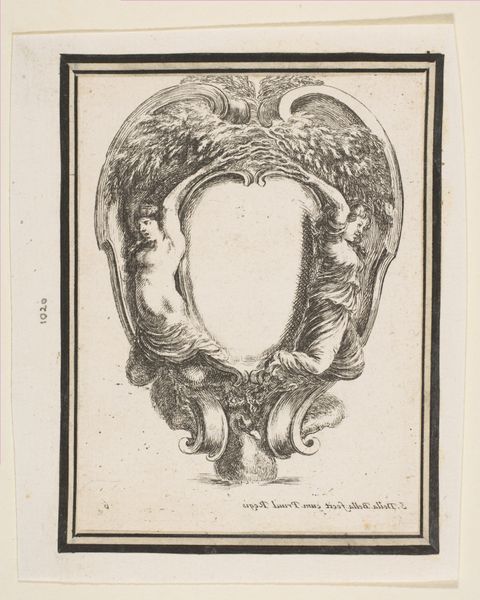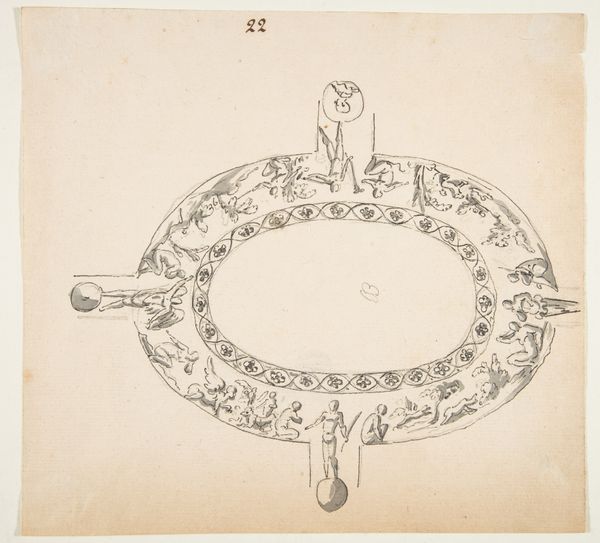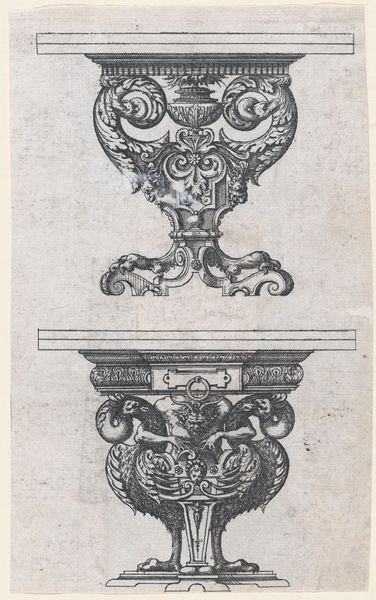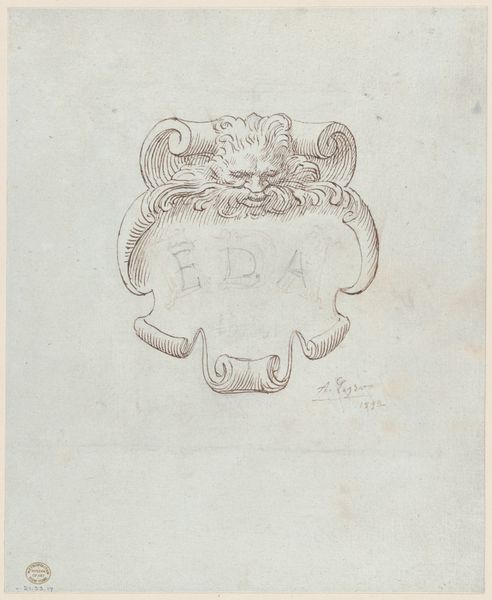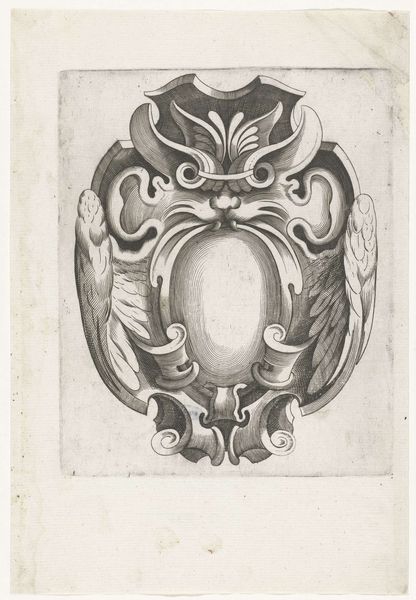
Design for a Ring, Plate 30 from 'Livre d'Aneaux d'Orfevrerie' 1561
0:00
0:00
drawing, print, etching, engraving
#
drawing
# print
#
etching
#
figuration
#
11_renaissance
#
history-painting
#
italian-renaissance
#
engraving
#
miniature
Dimensions: Plate: 2 11/16 × 1 15/16 in. (6.8 × 4.9 cm) [oval plate] Sheet: 3 1/16 × 2 3/16 in. (7.8 × 5.5 cm) [cut]
Copyright: Public Domain
Curator: It has a sort of whimsical weightiness, doesn't it? Almost like holding up the world in your ring. Editor: Precisely. What you are sensing is intrinsic to “Design for a Ring, Plate 30 from 'Livre d'Aneaux d'Orfevrerie'”, dating back to 1561 and crafted by Pierre Woeiriot de Bouzey II. Its medium is a dance between etching, engraving, drawing, and print, presenting a miniature tableau within an oval frame. Curator: A dance indeed. The human figures, almost acrobatic, remind me of dreams where bodies bend to the unbelievable. And they seem to carry so much responsibility with such composure. Or is it resignation? I can't quite tell. Editor: Observe how the figures, mirroring each other in a chiastic structure, bear the weight. The plinth is meticulously detailed with acanthus leaves, signaling Renaissance ideals and perhaps wealth, culture, and a legacy, all balanced on those straining shoulders. Their postures indicate clear formal awareness and technical skill in conveying musculature and tension. Curator: But who are these beings? Are they Atlas figures stripped of their starry sky and given mere foliage instead? Maybe it's a commentary on our ambitions - this grandeur, this ornament that ends up resting heavily on ordinary lives? Editor: They become allegorical, signifying a load of responsibility. Through their near-identical mirroring and circular composition, this Renaissance artwork suggests cycles, repetition, the perpetual strain of status, or maybe merely, a celebration of symmetry and ideal proportions in a work that shows remarkable engraving finesse. Curator: It makes you wonder, doesn't it? What we choose to adorn ourselves with and at what cost? Editor: And further reflects on what makes historical design profoundly and perpetually evocative, a visual riddle posed across centuries.
Comments
No comments
Be the first to comment and join the conversation on the ultimate creative platform.
